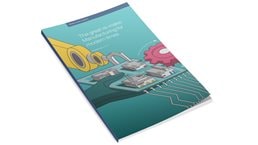Over the past two decades, automation in manufacturing has been transforming factory floors, the nature of manufacturing employment, and the economics of many manufacturing sectors. Today, we are on the cusp of a new automation era: rapid advances in robotics, artificial intelligence, and machine learning are enabling machines to match or outperform humans in a range of work activities, including ones requiring cognitive capabilities. Industry executives—those whose companies have already embraced automation, those who are just getting started, and those who have not yet begun fully reckoning with the implications of this new automation age—need to consider the following three fundamental perspectives: what automation is making possible with current technology and is likely to make possible as the technology continues to evolve; what factors besides technical feasibility to consider when making decisions about automation; and how to begin thinking about where—and how much—to automate in order to best capture value from automation over the long term.
How manufacturing work—and manufacturing workforces—could change
Stay current on your favorite topics
To understand the scope of possible automation in the manufacturing sector as a whole, we conducted a study of manufacturing work in 46 countries in both the developed and developing worlds, covering about 80 percent of the global workforce. Our data and analysis show that as of 2015, 478 billion of the 749 billion working hours (64 percent) spent on manufacturing-related activities globally were automatable with currently demonstrated technology.1 These 478 billion working hours represent the labor equivalent of 236 million out of 372 million full-time employees—$2.7 trillion out of $5.1 trillion of labor—that could be eliminated or repurposed, assuming that demonstrated technologies are adapted for use in individual cases and then adopted. These figures suggest that, even though manufacturing is one of the most highly automated industries globally, there is still significant automation potential within the four walls of manufacturing sites, as well as in related functional areas such as supply chain and procurement. As McKinsey research has shown, manufacturing is second, among industry sectors, only to accommodation and food services in terms of automation potential (Exhibit 1).2

We emphasize that the potential for automation described above is created by adapting and integrating currently demonstrated technologies3 (see sidebar, “Understanding automation potential”). Moreover, it is notable that recent technological advances have overcome many of the traditional limitations of robotics and automation. A new generation of robots that are more flexible and versatile, and cost far less, than those used in many manufacturing environments today can be “trained” by frontline staff to perform tasks previously thought to be too difficult for machines—tasks such as picking and packing irregularly spaced objects, and resolving wiring conflicts in large-scale projects in, for example, the aerospace industry. Artificial intelligence is also making major strides that are increasing the potential for automating work activities in many industries: in one recent test, for example, computers were able to read lips far more accurately than professionals.
Our study also looked at the automation potential for specific types of activities and jobs within the manufacturing sector. We found that 87 percent of the hours spent on activities performed by workers in production occupations are automatable—the most of any manufacturing occupation. Even among other occupations in manufacturing (for example, engineering, maintenance, materials movement, management, and administration), however, there is still significant opportunity, with approximately 45 percent of these working hours automatable as well.4
When comparing various subsectors within manufacturing, we see a wide variation of automation potential that can be explained partly by the nature of the activities themselves, and partly by differences in the skills levels required of workers and in the technological complexity of the manufactured product:
- Low-skill labor/low product complexity. Apparel/fashion/luxury (82 percent of hours worked are automatable), agriculture processing (80 percent), food (76 percent), beverages (69 percent). The predominance of repetitive, low-skilled activities in this group makes it highly susceptible to automation.
- Medium-skill labor/moderate product complexity. Furniture (70 percent), basic materials (72 percent), chemicals (69 percent), medical devices (60 percent), pharmaceuticals (68 percent), auto/assembly (64 percent), electric power and natural gas (53 percent), and oil and gas (49 percent).
- High-skill labor/high product complexity. Aerospace and defense (52 percent), advanced electronics (50 percent), high tech (49 percent), and telecom (43 percent).
As for the monetary value of the automatable labor in various manufacturing subsectors, the differences can be up to threefold, depending on the mix of labor in a given subsector ($27,000 per year in apparel/fashion/luxury, compared with $75,000 per year in oil and gas). Comparing the groupings listed above, on average we see a 1.6-fold increase in wages per hour automatable increase going from low- to high-skill/complexity, and a 1.4-fold increase going from low- to medium-skill/complexity.
Would you like to learn more about our Operations Practice?
Finally, we find that even though technical automation potential does not vary greatly across the global economy, the fact that 81 percent of the world’s automatable manufacturing hours and 49 percent of automatable labor value reside in developing countries means that an upswing in automation in the developing world could have significant global impact. Considering that 68 percent of the automatable manufacturing hours in the developing world (and 62 percent of automatable labor value) are in China and India alone, we see potential for major automation-driven disruption in India and China, although how long that could take will depend, in part, on the speed with which the costs of automation solutions fall to below wage levels in these countries. A radical shift toward automation in India and China could have major employment implications in both countries and would also inject a substantial boost to economic growth there.
What to automate: Factors to consider
Technical feasibility is, of course, a necessary precondition for automating a given work activity or set of activities. Yet it is far from the only factor companies need to take into account when deciding what and how to automate. A second factor to consider is the cost of developing and deploying both the hardware and the software for automation. The cost of labor and related supply-and-demand dynamics represent a third factor: if workers are in abundant supply and significantly less expensive than automation, this could be a decisive argument against it—or for automating only to a limited degree. For example, an automotive supplier in India has found that after introducing low-cost automation of a few steps on its production line—which reduced staffing levels from 17 to 8—its costs are now equivalent to those for a Japanese company running the same kind of production line with a higher degree of automation and a staffing level of only two.
A fourth factor to consider is the benefits beyond labor substitution, including higher levels of output, better quality, and fewer errors (see sidebar, “Adapting and enhancing human capital”). While it is tempting for a manufacturer to view automation primarily as a labor-savings lever, these other benefits are often larger than those of reducing labor costs. Automation options should be considered and evaluated using a clear strategy focused on reducing the total cost of operations. We find that companies typically use automation to address a number of opportunities, including increasing throughput and productivity, eliminating variation and improving quality, improving agility and ensuring flexibility, and improving safety and ergonomics.
In addition to technical feasibility, cost of hardware and software, labor supply and demand, and benefits beyond labor substitution, a fifth factor to be taken into account in deciding whether and where to automate is regulatory and social-acceptance issues, such as the degree to which machines are acceptable in any particular setting, especially where they will interact with humans. The potential for automation to take hold in a given sector or occupation reflects a subtle interplay among all five of the factors we have listed and the trade-offs among them.
Capturing long-term value from automation
The ultimate goal for manufacturers as they weigh the various factors described above is to capture as much long-term value as possible from automation. How to go about achieving this depends, in part, on how far along the spectrum of automation maturity a given manufacturer is. We see this spectrum as having four stages:

The great re-make: Manufacturing for modern times
This 21-article compendium gives practical insights for manufacturing leaders looking to keep a step ahead of today’s disruptions.
- Low maturity. There is limited infrastructure for employing automation—for example, lack of robotics, sensors, and data-collection systems.
- Mid-maturity. There is significant automation infrastructure in place but it uses only a fraction of the potential—for example, many sensors are installed but the majority of data are not utilized; numerous data-capture systems lack interconnectedness; programming optimizes local processes but not global value streams.
- High maturity. There is full utilization of traditional automation infrastructure on the manufacturing floor, but not employment of cutting-edge automation technology and realization of potential of automating managerial, support-function, and back-office tasks.
- Best-in-class. Full potential of automation is captured with latest technology across all spectrums of the operation.
Evaluating a manufacturer’s operations along this spectrum of automation maturity can help determine what kind of approach will best help to capture full long-term impact. For example, lower-maturity operations will benefit more from “clean sheeting,” while more mature operations can focus on fully utilizing their already robust automation infrastructure to get to best-in-class. Exhibit 2 describes in more detail the steps manufacturers can take to move along the spectrum.

Wherever a given company is on the maturity spectrum, it is essential to keep the focus on value creation. To help diagnose where automation could most profitably be applied to improve performance, business leaders may want to conduct a thorough inventory of their organization’s activities and create a heat map of where automation potential is high. Business processes shown to have activities with high automation potential can then be reimagined under scenarios where they take full advantage of automation technologies (rather than mechanically attempting to automate individual activities using current processes). Finally, the feasibility and benefits of these automation-enabled process transformations can be used to prioritize which processes to transform using automation technologies. Such an approach can help ensure that automation investments deliver maximum impact for the enterprise.



